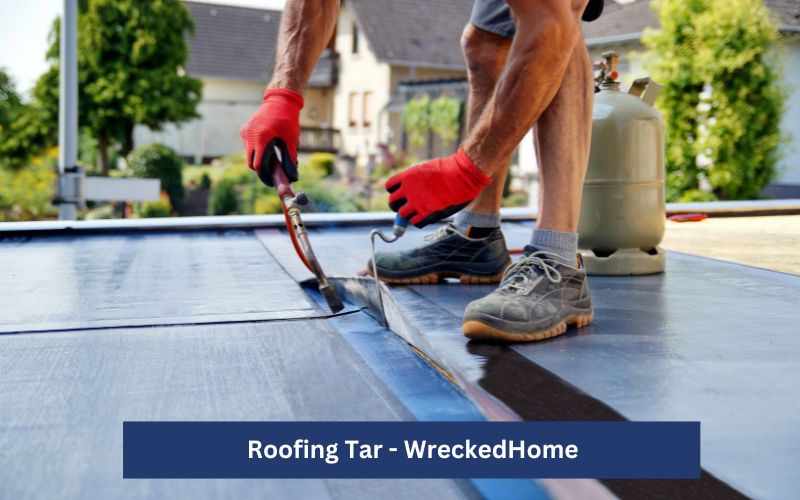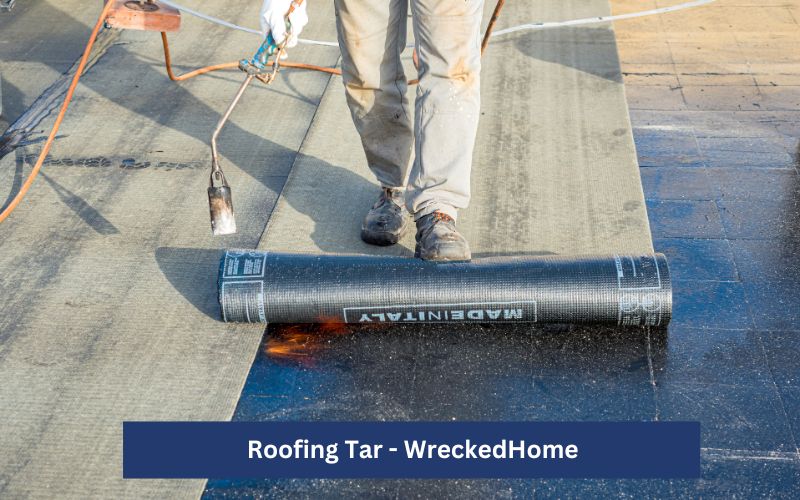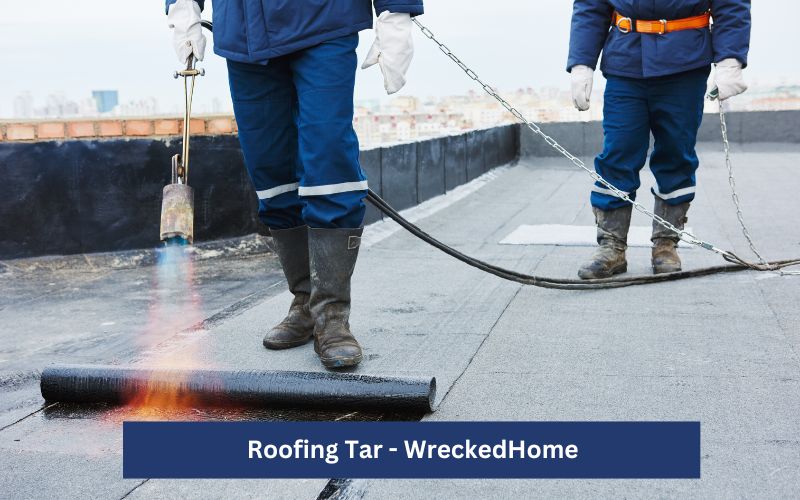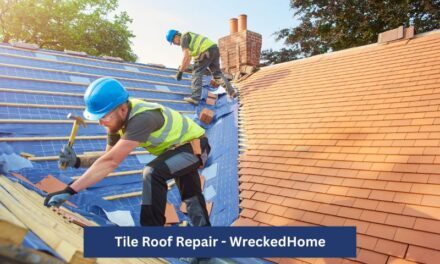Roofing tar has multiple uses like leaks or crack blocking and is also used as a waterproof substance in roofing. Its exceptional features like water resistance, UV rays blocking, and cooling energy preservation make it ideal to use along with other roofing substances.
However, it’s important to know how to apply it and what are some alternatives if you don’t have access to roofing tar. You can use stone coated metal, single ply roofs, solar shingles, or standing seam roofing as alternatives to it. But the longevity and effectiveness of the material largely depends on the applying method.
So, it’s important for the user to know the thorough and secure procedure for it. Otherwise, the whole effort will end in nothingness and the roof may suffer some damage as well. Don’t fret and keep scrolling to explore what are the uses, alternatives, and application methods for roofing tar!
What are the Uses of Roofing Tar?
Roofing tar or cement can help in maintaining your property well. You can use it for different purposes as it can be used to;

- Block Leaks
Over time, your home’s roof gets damaged due to heavy rains or other severe weather situations. It may even lead to occasional leaks that damages the interior of the building. But roofing tar can make a waterproof barrier that doesn’t let the water penetrate to the building.
- As Adhesive Material
As roofing tar is adhesive in nature, it creates strong bonds with other building materials like bricks or blocks. So, it’s used to adhere things in place.
- Repairing Roofs
As mentioned above, the roofing tar is adhesive in nature and also also dries quickly. So, it can be used as a damage repairer.
- Repairing Downspouts and Gutters
Gutters and downspouts suffer structural damage due to their exposure to water. So, they may start leaking water after some time. However, the tar can be used to repair them as well to avoid the damage to the building’s foundation.
- Roof Edge Sealing
It can be used as roof siding to block the water penetration via holes or cracks. Hence it’s a great protection against the moisture effects.
- A Temporary Fixer
Remember that the roof tar doesn’t have a longer lifespan. So, it can be a temporary fixture to damages until you manage to make a permanent repair.
- Repairing Roof Holes
Like other leaks and damages, the tar can be used as a hole filler. You can inspect the holes and fix them using tar material.
- Flash Repairing
Tar can be applied around the chimneys and vents to avoid flashing. Most roofers use it for this purpose.
What are the Alternatives of Roofing Tar?
Roofing tar is a highly unsustainable material and is not liked by all the users. But don’t worry; some alternatives can prove effective for you. Here are some of the most closely resembling materials that can be used as alternatives to the roofing tar;
- Stone Coated Metal Roofing
- Rooftop Solar Plates
- Single Ply Roofs
- Standing Seam Roofs
Visit our store for 10% off our Home Maintenance products here.
How to Apply Roofing Tar? – A Step-by-Step Procedure
Applying roofing tar to your roofs should be a DIY project as it’s quite easy. However, you should equip yourself with the necessary tools and material before moving on to start the procedure.
- Protective gloves
- Eyeglasses
- Protective shoes
- A measuring tape
- Ladder
- A bucket
- Pain rollers
- Fiberglass MOP
- Roofing tar
Once you’ve grabbed all the materials and tools, it’s time to apply the tar to your roof. Follow these steps for it;
Note: It’s necessary to have first aid items ready before you start the application process. It may include cold water and some anti-inflammatory drugs. Also, don’t try to remove the tar if it falls on your body part as it may cause damage upon removal. So, call a doctor for emergency treatment!
Step-1. Repair the Structural Damage to the Roof
It’s good to check for structural damage to your roof before you head towards tar application. If you find any damage, consider repairing it before applying the tar. Otherwise, the hot and melted tar may leak from the cracks or holes and will damage the interior.
Step-2. Leave the Roof Tar Container in Sunlight
Roofing tar will spread properly when it’s in a well melted form. So, leave it in direct sunlight when you’re checking for the damages and cracks. It will make the tar thinner and easy to apply.
Step-3. Clean the Roof
It’s necessary to clear the roof before starting the tar application. Clean all the debris and dust using a broom. Ensure there is no obstacle on the roof that may disrupt the application.
Step-4. Pour and Spread the Tar
When you’re sure that the roof surface is clean and clear, start pouring the tar material on it using a bucket. Start from a corner and keep spreading it with the roller. Move backwards when applying the tar and cover the whole surface. Ensure you cover all the gaps and cracks carefully while applying the tar.
Step-5. Let the Tar Dry
So, you have done it. Let the tar dry completely before checking it and going for another coat if you believe some holes are still there.
When Should You Tar Your Roof?
You should apply the tar if you reside in area with a moderate climate. The tar melts quickly and may cause a sticky mess upon leakage if you apply it in extremely hot temperatures.
Similarly, it will not dry properly if you apply it in extremely cold temperatures. So, it will not perform its role properly. Always apply the roofing tar in a moderate temperature!

When Should You Avoid Roofing Tar?
Don’t apply roofing tar as a permanent solution to cracks and damages to your roofs. Also, if you’re looking for a repairing substance with a longer lifespan, tar is not for you because its lifespan is not too long.
Moreover, it’s not a good option for commercial purposes where the substance is needed in extremely high quantities. And lastly, it is not the right option for areas featuring extremely hot or cold weather.
What are the Pros and Cons of Roofing Tar?
Roofing tar is a multipurpose substance that can be used for different purposes. However, it has some drawbacks as well that should not be ignored at any cost. And it’s good to weigh all these pros and cons before making an informed decision on choosing the roofing substance. Here are the most important advantages and disadvantages of roofing tar;
Pros:
- Tar tends to be slippery when it dries. So, it’s a great snow protector because the snow will fall immediately after it melts a little bit.
- Roofing tar can withstand the heavy storms because it’s windproof. So, it’s a good choice for those who live in areas featuring frequent storms and heavy winds.
- Another important thing about the tar is that it’s waterproof. So, it doesn’t let the water leak into your home’s interior through the cracks.
- A layer of the roofing tar helps in reflecting or blocking the UV light.
Cons:
- Roofing tar is a highly unsustainable roofing material that may cause severe damage if you don’t ignore the preventive tips.
- The tar has a very pungent smell and has certain health effects like headache, skin allergy, and respiratory disorders.
Tips to Apply Roofing Tar Safely
As discussed above, the roofing tar has a very pungent smell and may result in certain health issues. However, one can prevent such issues when applied carefully. Here are some tips to apply the tar safely;
- Always wear protective gears like gloves, eyewear, and heat resistant shoes when applying the tar.
- Wear a highly protective mask when applying the tar coating.
- If you’re not very experienced, avoid applying the tar on the steep roofs.
- Ensure you have gathered the first aid items before starting the process.
If you’re still confused and think it’s messy to apply the tar, hire a professional to avoid any self damage!
Conclusion
In conclusion, we discussed the roofing tar uses and alternatives. Roofing tar is a sticky material that can be used to repair the minor roof cracks, leaks, and to attach different roofing objects. But it’s not ideal for all the users due to its short lifespan and odd smell.
But there are some other alternatives that can be used in its place. No matter what roofing substance you choose, its application will make a great difference. So, ensure you apply the tar properly and carefully. Otherwise, you will have to suffer a lot when applying the tar.
For any repairs, installations, builds, or questions; We recommend you to hire a professional. Find A Pro Near You Here!
FAQs
Can roofing tar be applied in the rain?
Not all but some types of tar can be applied even in the rain. There is rubber based and other types of waterproof roofing tar can withstand rain and will dry after application. But it’s good to avoid its application in rain!
What happens if tar gets wet?
The fibers of the tar weaken in moist conditions and will start decaying. So, it will lose its integrity and strength. Eventually, the leaks and holes may again start creating trouble for you.
How long does tar last on a roof?
The roofing tar doesn’t last for a vert long time but can serve for almost 20-25 years when applied properly. But remember its application largely determines how long the tar coating will last.





































